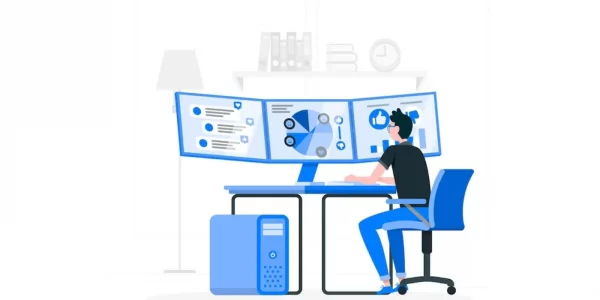In today’s digital world, REST APIs (Representational State Transfer Application Programming Interfaces) are crucial in connecting different software systems and enabling seamless communication. However, ensuring the uptime and reliability of these APIs is essential for businesses to stay ahead in an increasingly competitive environment. In this article, we will explore various strategies that can help you maintain a high level of for REST API uptime.
Understanding REST API Uptime

Uptime refers to the period during which a system, in this case, a REST API, is available and functioning properly. For businesses, maintaining a high uptime for their APIs is crucial to ensure uninterrupted services, customer satisfaction, and business continuity. Let’s delve into some strategies that can help you achieve this.
1. Robust Infrastructure
Building a solid infrastructure is the foundation for maintaining high API uptime. This involves using reliable servers, load balancers, and redundant network configurations. By distributing the load across multiple servers and implementing failover mechanisms, you can minimize the risk of downtime due to hardware failures or network issues.
2. Scalability and Load Testing
Scalability is vital for handling increasing traffic and ensuring a smooth user experience. Conduct regular load tests to identify the maximum capacity of your API and its components. This will help you understand if your infrastructure can handle peak loads without compromising performance. By proactively scaling your resources, you can avoid API failures during high traffic periods.
3. Error Handling and Monitoring
Effective error handling is crucial for identifying and resolving issues that may impact API uptime. Implement comprehensive monitoring systems to track API availability, response times, and error rates. Real-time alerts can notify you about potential problems, enabling quick responses and minimizing downtime. Regularly review error logs and metrics to identify patterns and address recurring issues promptly.
4. API Versioning and Deprecation
API versioning allows you to make changes and enhancements without disrupting existing users. By maintaining backward compatibility and deprecating outdated versions gradually, you can provide a seamless transition for your users while minimizing the risk of downtime. Clearly communicate versioning changes to your API consumers to ensure they are aware of any upcoming updates.
5. Backup and Disaster Recovery
Implementing robust backup and disaster recovery mechanisms is essential for minimizing downtime and data loss. Regularly backup your API data and ensure it is stored securely. Develop a comprehensive disaster recovery plan that includes data restoration procedures, backup validation, and regular testing. Being prepared for unforeseen events will help you recover quickly and maintain API uptime.
6. Continuous Monitoring and Performance Optimization
Continuous monitoring is vital for identifying performance bottlenecks and proactively addressing them. Regularly analyze API performance metrics, such as response times and throughput, to identify areas for improvement. Optimize your code, database queries, and network configurations to enhance API performance and reduce the likelihood of downtime.
To make use of it, you must first:
- Go to Uptimeapicloud and simply click on the button “Start monitoring with 30-day Free Trial” to start using the API.
- After signing up in Uptimeapicloud, you’ll be given your personal Trail. Click on the Monitors option.
- Click on the New Monitor button and add the API details with the API name and URL.
- Once you are done, make the API call by pressing the button “Create” and see the results on your screen.
Conclusion
Maintaining a high level of uptime for your REST API is crucial for ensuring seamless communication and customer satisfaction. By implementing robust infrastructure, conducting load testing, monitoring errors, versioning your API, and prioritizing disaster recovery, you can stay ahead in the digital landscape. Continuous monitoring and performance optimization will further enhance the reliability of your API. By following these strategies, you can empower your business to stay ahead in the competitive market.
Remember, ensuring the uptime of your REST API requires ongoing dedication and proactive measures. By prioritizing reliability and implementing these strategies, you can provide a seamless and uninterrupted experience to your API consumers.
Read More: Choose Uptimeapi for Reliable API Uptime Monitoring

